Move aside, planned obsolescence. Over the past few years, we’ve seen a push among outdoor companies to help consumers extend the useful lifespan of their clothing and gear through in-house repair shops, customer education and the use of recycled products. This focus on reuse keeps products out of landfills and creates less waste, offers a more cost-effective option for consumers and—at least for these four brands—is a lot more fun.
Vibram
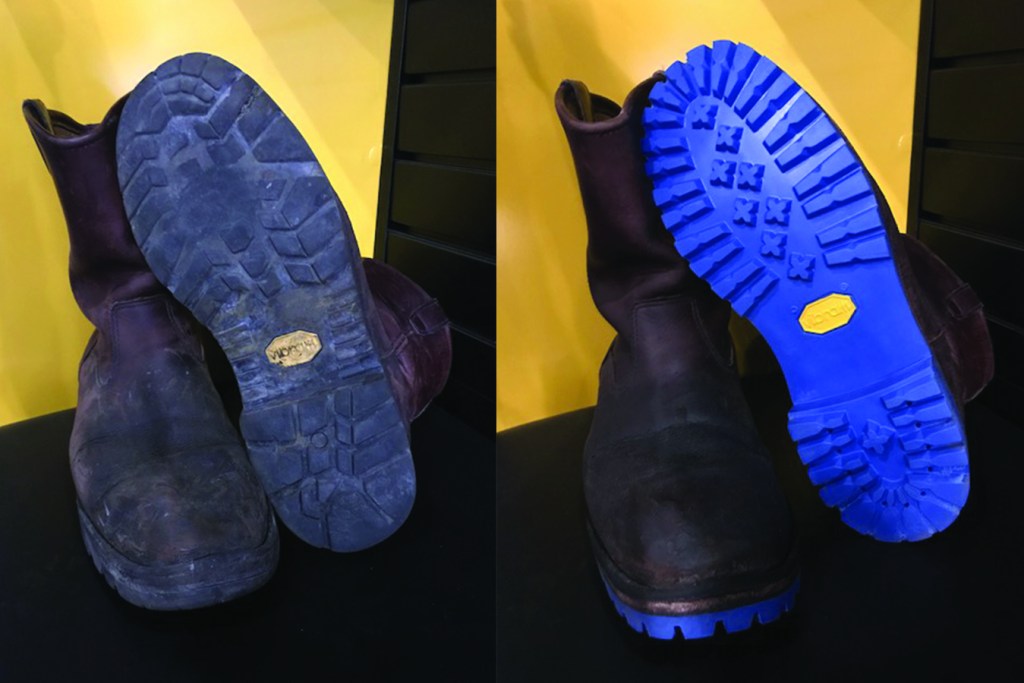
Photo Credit: Vibram
Love your favorite kicks, but wearing through the sole? Look no further than Vibram’s Sole Factor Tour, where their expert cobblers hit the road in a 38-foot mobile home that’s been renovated into a workshop on wheels. Since 2016, the team of Vibram-employed cobblers has been stopping at REI stores around the country, setting up shop for the weekend and repairing your finest footwear. When walk-in guests arrive, cobblers assess the style, wear and configuration of your shoes, listen to what you want to achieve, then suggest the best options for replacement Vibram soles. All shoes are welcome, from mountaineering boots to gym shoes to high heels. And don’t worry about getting turned away: In busy cities, Vibram actually contracts with local cobblers to have more hands available to help.
“[The tour] is a community partnership that’s fundamentally about keeping old products new again,” said Allon Cohne, chief marketing officer of Vibram. “There are millions of pairs of shoes that people love and want to keep, and we believe that this is a socially and environmentally responsible way to repair, maintain and even upgrade your footwear for many more years of use.”
The van carries more than 40 different styles of Vibram soles, and the team of cobblers can repair an average of 25 pairs per day or 75 to 100 per weekend. Cohne estimates they’ve repaired more than 1,200 pairs of shoes to date, and notes that it’s a goodwill partnership: Vibram pays the cobblers, and the $20 suggested customer donation goes straight to the Big City Mountaineers, a nonprofit dedicated to facilitating outdoor experiences for inner-city youth.
Filson

Photo Credit: Filson
Filson started as C.C. Filson’s Pioneer Alaska Clothing and Blanket Manufacturers in 1897 when C.C. Filson opened a store in Seattle that specialized in outfitting aspiring prospectors during the Klondike Gold Rush. Today, the company makes luggage, tin-cloth jackets, and high-quality hunting and fishing gear that’s every bit as popular with weekend warriors as it is with Alaskan expedition guides. But the company’s promise is the same: It’ll last. If it doesn’t, send it back—and they’ll make it right. If the product is deemed repairable, a select group of technicians will fix it. If not, Filson will send back a replacement.
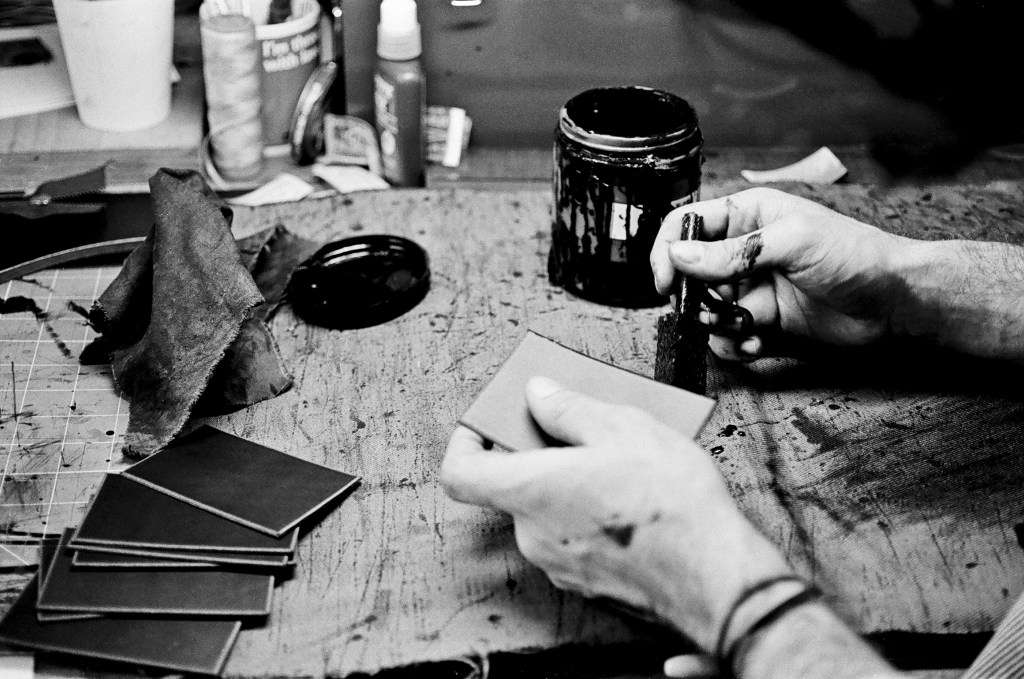
Photo Credit: Filson
Another way the company aims to extend the life of its gear is through the Filson Restoration Department (FRD), started in December 2013. A small team of skilled craftspeople restores bags that customers have sent back, fixing zippers, patching holes, re-treating leather, and re-stitching blown-out seams. Most products don’t leave looking brand-new: They’re patched with worn-in tin cloth, broken-in leather or material repurposed from other pieces of Filson gear, giving each item a unique, weathered look that many customers love. Filson currently sells the FRD bags in its Seattle store. As the FRD evolves, Filson plans to expand its team of repair specialists, offer one-of-a-kind bags for sale with custom accents like calf hair, custom stitching, and rare color combos, and host special FRD pop-up shops in Filson stores around the country.
Chaco
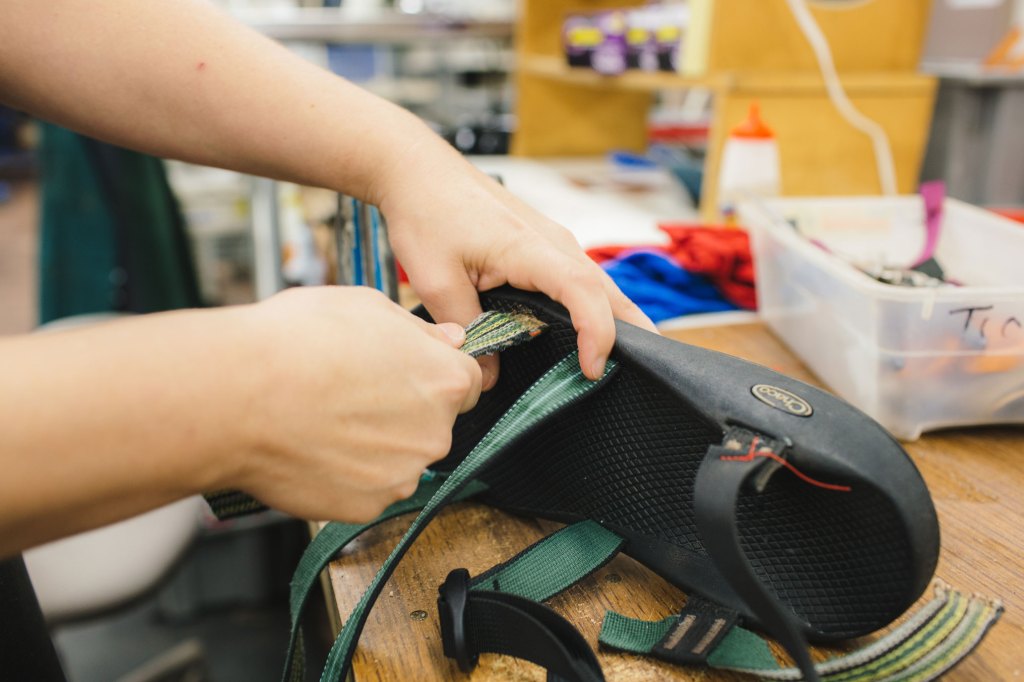
Photo Credit: Carson Brown
Even if you don’t own a pair, you’ve definitely seen them: those sturdy-soled, ultra-comfortable, customizable sandals favored by camp counselors, river guides, teenage explorers and desert wanderers alike. Adventurers of all ages swear by them because Chaco specifically designed them to be repaired rather than thrown away.
Chaco makes the process easy: You simply send your old sandals to the ReChaco facility in Rockford, Michigan, where restoration specialists can replace the shoe’s webbing, attach a new outsole, replace buckles and make other repairs. Lisa Kondrat, director of planning and operations at ReChaco, estimates the program has repaired more than 70,000 pairs of sandals since 2010.
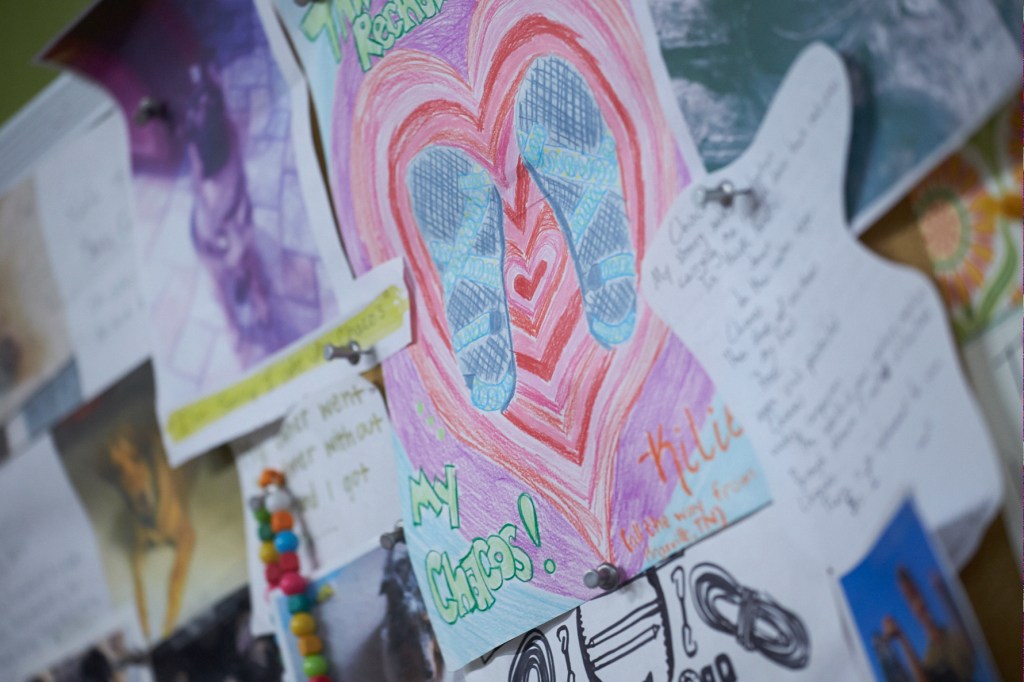
Photo Credit: Chaco
The best part of the program, said Kondrat, is getting to hear the owners’ stories about their sandals, which often appear at the ReChaco factory wrapped in duct tape or with letters, photographs, postcards and sticky notes. “We work diligently to get your [Chacos] back into adventuring shape,” she explained, “so you can continue creating new stories to accompany the old.”
Gore
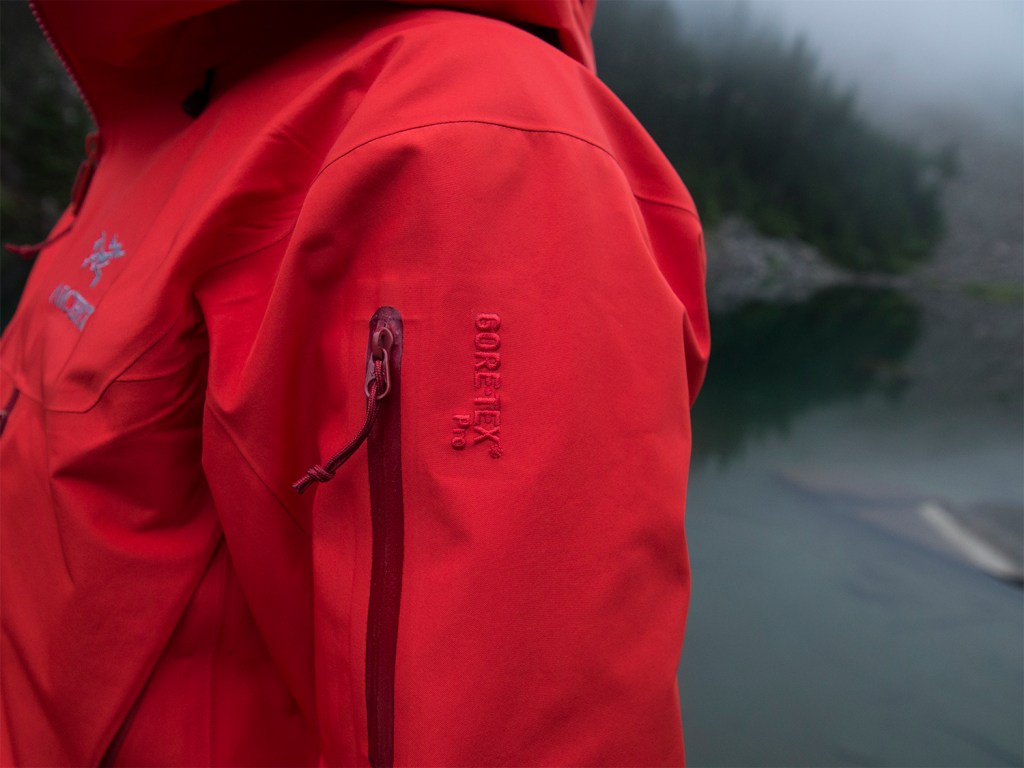
The masterminds behind your waterproof jacket are nerds—and they’re putting their science-based superpowers to good use. According to Matt Schreiner, product specialist at Gore (the company behind Gore-Tex® fabric), the company’s extensive studies on sustainability revealed that longevity is key.
“We looked carefully at the lifecycle of a Gore-Tex jacket and realized that the single most effective way to reduce the environmental impact of any piece of clothing is to focus on durability. The longer you can make a garment last, the more you reduce its environmental impact,” Schreiner said.
With this in mind, Gore focuses on durability at every stage of design, creation and consumer use. A big part of this push, says Schreiner, is educating users about how to wash, care for and maintain their Gore-Tex products, which directly impacts their lifespan. The company’s educational efforts include more detailed information on product tags, in-depth care instructions on their website about how to wash Gore-Tex and restore water repellency, and even in-person events.
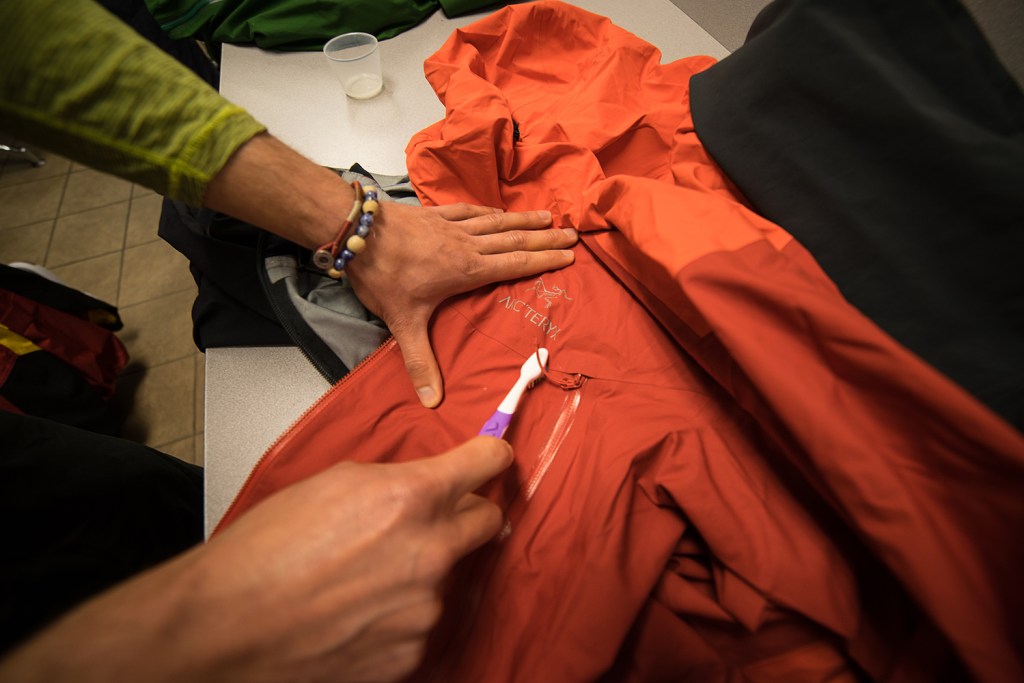
On October 4, 2017, REI and Arc’teryx hosted a Laundromat Takeover event in Seattle to share the best techniques to clean and revitalize outdoor apparel. (Photo Credit: Jeremy Wesley)
Dave Kiyak of REI’s national events marketing team recently coordinated three such events in Seattle, Portland, Oregon, and Denver around care techniques for outdoor apparel. Representatives from REI, Arc’teryx, Nikwax, and Gore were on-site to guide participants in a hands-on tutorial on washing and treating the DWR finish on their outerwear.
“People are hungry for the knowledge to do this on their own,” Kiyak says. “But our hands-on, interactive experience provides education and gets folks pumped about regular gear-care and maintenance in their own homes. They get to hang out with other enthusiasts, mingle with gear experts, and learn how to make some of their most expensive garments last as long as possible. Plus we brought really good snacks.”
So, these efforts are good for the earth—but are they good for consumers, too? REI member and 2017 Everest summiter Patrick Mauro thinks so. “I spent five to 10 hours after every big expedition repairing and maintaining my gear, which involves everything from sharpening crampons and ice tools to textile repairs on soft goods to resewing and re-taping tent seams, and it’s incredibly helpful to know that process is supported by manufacturers. When you have a long-term relationship with your gear, you can really dial in your systems and know the limits of your equipment. I’m absolutely willing to invest more in good quality gear that lasts. I get better value—and a sense of nostalgia, too.”
Editor’s Note: Another way to extend the life of outdoor gear is to find a new home for it. We recently launched the REI Co-op Used Gear Beta. It’s a new online program offering co-op customers a more sustainable and affordable way to purchase pre-loved outdoor gear and apparel that customers have returned. REI also recently hosted six Used Gear Swaps where you could buy, sell and trade used gear with fellow outdoor adventurers. Look for more of these Used Gear Swap events in the future.


